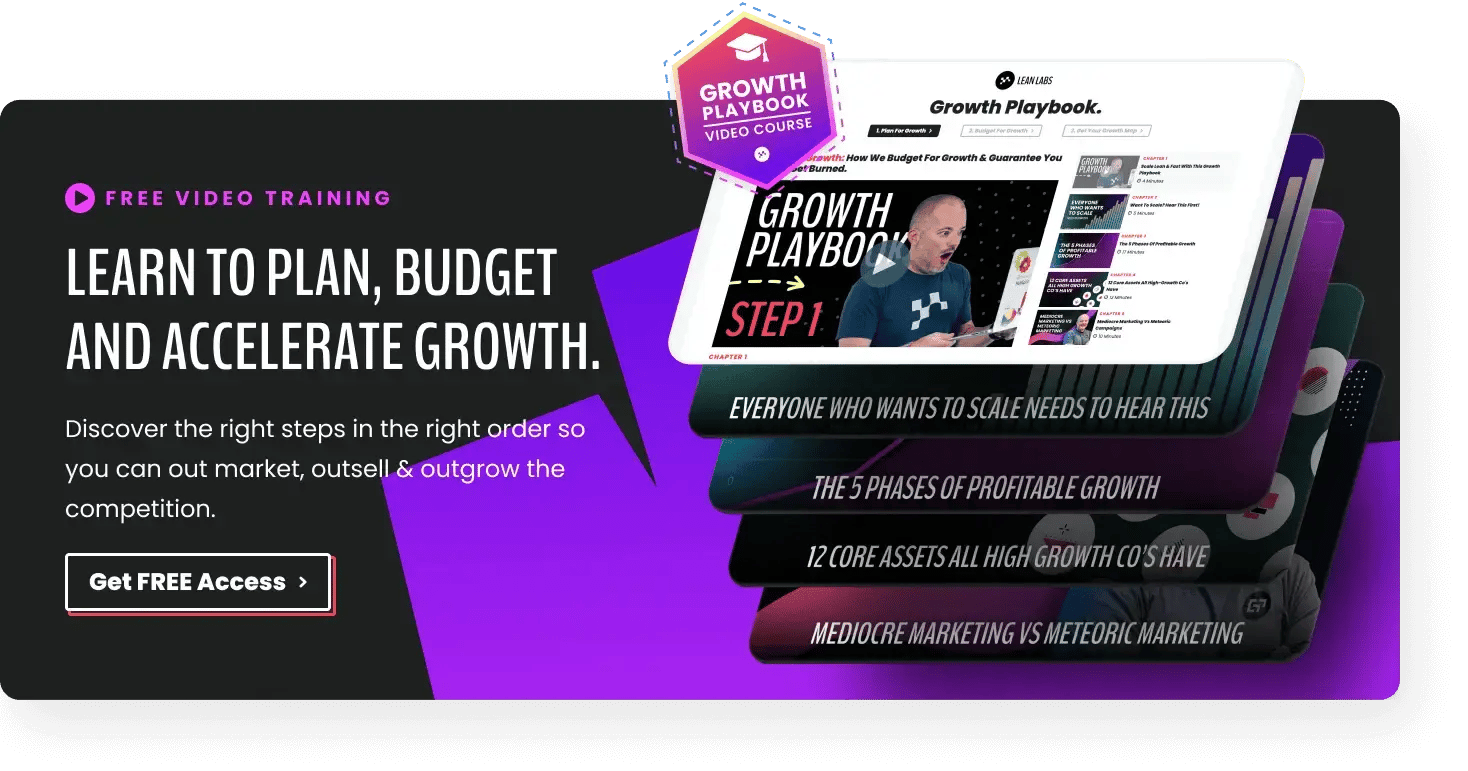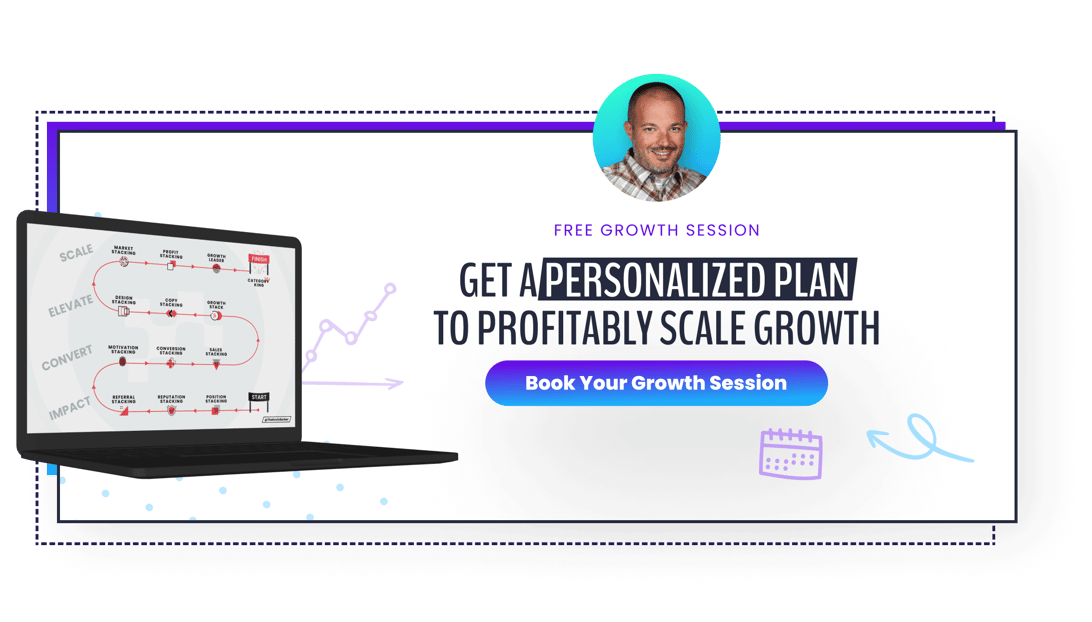You know how amazing your product is. You poured countless hours of blood, sweat, and tears into developing the perfect product. Obviously, the moment you launch, the customers will come flooding in, and it will be smooth sailing all the way to the moon.
What if I told you that 95% of new products fail? (ouch…)
Is this because all these new products are terrible? Not quite. It’s because these businesses failed to execute an effective go-to-market strategy.
Related read: 5 Lethal Problems that Kill Most Growth Marketing Strategies
A go-to-market plan is essential for identifying your target audience, developing your messaging, and setting up the necessary sales and marketing channels to bring your product or service to market.
Creating a go-to-market strategy may seem daunting, but it doesn’t have to be. In this article, I’ll show you eight simple steps to creating a successful go-to-market plan for your business, so you can launch your product knowing you’ve done everything you can to make it a success.
VIDEO TRAINING
Nail Your Go-To-Market Strategy With This Proven Playbook.
Learn to plan, budget, and accelerate growth with our exclusive video series. You’ll discover:
- The 5 phases of profitable growth
- 12 core assets all high-growth companies have
- Difference between mediocre marketing and meteoric campaigns
Thanks for submitting the form!
We'll review the information you've submitted and respond to you just as soon as possible.
The Importance of Developing a Go to Market Strategy
A go-to-market strategy is a step-by-step plan that you must create to successfully launch a product to market. Think of it as a roadmap. Once you have a plan, you’ll know how to position your product, and you’ll be able to predict its performance based on market research and competitive data.
Even big brands experience go-to-market failures. Coke tried New Coke which failed to capture fans of the original Coke. Gap tried a new logo and then reversed its decision in a few days. Apple released a computer called Lisa. Remember that?
Large companies can recover, but a poor product or service launch might tank the entire operation for many small businesses. It’s vital to plan a go-to-market strategy that fits your budget and buyer persona.
Without one, you don’t know if your product fits the market or how stiff your competition might be. Hope for the best and plan for the worst with a solid go-to-market strategy.
At Lean Labs, strategy is the first thing we do for our clients. Most people come to us thinking they’ve got a solid strategy, but more often than not, their growth system isn’t working properly.
Instead of rushing to market without a plan, we focus on building a strategy to transform results and have used those exact strategies to help our clients generate over $100 million in revenue and raise $90 million in funding.
The Proven Roadmap for Developing a Go-to-Market Strategy
1. Identify your buyer persona(s)
2. Create your unique value proposition
3. Use the buyer’s journey to define your sales process
4. Choose a sales strategy
5. Decide how to generate product demand
6. Create a content marketing strategy
7. Hone your marketing and sales process
8. Turn your customers into raving fans
1. Identify Your Buyer Persona(s)
Strong messaging is built on top of a strong, empathetic understanding of who your target customer is. You might think you know who your product helps, and if you build it well, people will flock to buy. It doesn’t work like that. You need a clear picture of your ideal customers.
- What are their interests?
- What are their problems and pain points?
- What are their jobs to be done?
- Where do they hang out?
- How do they search for solutions to their problems?
- What words do they use?
- How do they like to receive information?
Answering these questions starts to form a persona.
To start mapping out your buyer persona(s), think about demographics; age, sex, roles, education, hobbies, and income. Then think about psychographic data; what are the motives behind people’s purchases? Create surveys, interview existing clients, and spend time on forums dedicated to your audience’s problems.
Once you know who you’re talking to and where they are in their buyer’s journey, you’ll create messaging that speaks to their challenges and pain points.
Your buyer persona(s) may be fictional, but they’re based on real people with real problems that you can solve.
2. Create Your Unique Value Proposition
Once you’ve mapped out your buyer personas, you need to know how to reach them and start conversations.
Use a value matrix to break down each persona, their problems, and how your product solves them. Let’s look at the different stages of the B2B buying process, the players involved, and where they are in the funnel without getting too granular.
Users: Awareness and Interest
Users are the people using your product or service. They have a problem, and you are here to help them. They will often initiate the buying process, too.
Example: An admin manager wastes time on tasks with little ROI every day. They realize that they could automate many tasks with a management system. They reach out to their manager and ask if there’s a possibility of purchasing software to solve their problem.
Influencers: Interest, Consideration, and Intent
Influencers are anyone who influences the purchase decision. They might be experts or thought leaders who make recommendations based on their experience and knowledge.
Buyers will be influenced by case studies, comparisons, and evaluation guides. Once they narrow down their options, they’ll be further influenced by customer stories and peer reviews. Finally, they want to validate their purchase decision through demos and ROI calculators.
Decision-makers
Decision-makers have the final say about a product or service. They base their decisions on data and information from users, influencers, and anyone else involved in the buying process.
Your unique value proposition should highlight why your audience should care about and buy from you. You have to create the messaging that ties together their problem and your solution.
For a great value proposition, consider the following:
- Don’t make it about you, your company, or your product. Instead, communicate how you solve a problem.
- Keep it short and straightforward. The shorter, the better. It should be easy to read and understand.
- Make sure it explains what you will do for your clients. What will they accomplish with you? What need do you fulfill?
- Lastly, it should align with your primary call to action. An incredible value proposition and compelling CTA are a winning combination.
Here’s a value matrix you can copy and use for yourself.
| |
Pain Points
|
Value Proposition
|
Messaging
|
|
User
|
|
|
|
|
Influencer
|
|
|
|
|
Decision Maker
|
|
|
|
Here’s a completed value matrix you can use as an example.
Company: Lean Labs
Product: Go-to-Market Strategy
| |
Pain Points
|
Value Proposition
|
Messaging
|
|
User:
Head of Marketing at Saas Startup
|
Struggling to drive awareness and interest.
|
Plan and execute a successful go-to-market strategy.
|
See the go-to-market strategies we create for our clients and how we make customer acquisition their competitive advantage.
|
|
Influencer:
VP of Product
|
Marketing has been unable to drive enough awareness for the awesome product they built.
|
By understanding who the product is for and how it makes their life better, our go-to-market strategy will attract the right customers. |
You built an amazing product. Now let’s go to where your customer is, and talk to them in a language that resonates, so that they will convert and become lifelong customers. |
|
Decision Maker
CEO
|
What’s the scalability and long-term value of a go-to-market strategy? What will the impact be on our organization?
|
An effective go-to-market strategy makes every dollar spent on marketing more profitable. |
Stop burning money with random acts of marketing. A well-built go-to-market strategy gets the right message in front of the right buyers at the right time.
|
Bonus tip: Test your messaging. You can test variables like the channels you use to advertise, the various segments of the audience you target, and the messaging.
3. Use the Buyer’s Journey to Define Your Sales Process
For a buyer, the process is pretty simple. They have a problem and research the topic. They find potential solutions and make a list. They narrow the list down and decide based on sales calls, product demos, and free trials.
It sounds straightforward, but if the company they buy from has done its job well, the buyer has been on a personalized journey from prospect to customer.
We break the buyer’s journey into three phases:
In the attract phase, you’re vying for the attention of your prospects. It might be in the form of a video, blogs, or whitepapers. Attract visitors with relevant and valuable content and help them learn about you and your product.
In the engage phase, your prospect has defined their problem and is looking for solutions. They might have downloaded your lead magnet, and you’ll have their email address or phone number to start engaging with them humanly and helpfully.
You want to generate interest and awareness, and educate your audience on your product’s value through messaging and content. At this point, your audience should be ready to explore their options.
Enter sales. The sales process typically looks like this:
- Connect: The lead connects with your sales rep.
- Qualification: Your sales rep determines whether your lead is interested in your product or service, that they need it, and whether they can afford it.
- Pitch: Focus on how your product helps customers and the results they’ll see if they become a user.
- Objection Handling: Listen to what your prospect has to say (concerns and questions) and reposition your offer.
- Close: A deal is agreed upon, and your lead becomes a customer.
In the delight phase, it’s time to delight your customer with seamless onboarding and excellent customer service.
Your customers should turn into raving fans. More on that later.
4. Choose a Sales Strategy
With the foundational work complete, you need a sales strategy to get your product or service to market. There are different models depending on your product and the market you’re entering.
You’ll need to consider the complexity of your product, how scalable it is, and the cost.
The Self-Service Model:
The self-service model is when a customer purchases independently. Generally, low-priced products are accompanied by an automated customer journey without the need for support. It’s typically a short sales cycle and is highly profitable.
An example is Netflix. Create an account, and away you go! You’ll still need a marketing team to drive traffic through email marketing and social media ads. Netflix uses data to market to customers through recommendations and machine learning.
The Relationship Model:
The relationship model is when your sales team needs to nurture a prospect. The salesperson develops relationships with buyers built on likeability and trust. This model is best for products of medium complexity and cost; the sales cycle ranges from weeks to a few months.
This model is profitable with a high sales volume and is easy to scale with more team members.
The Solution Model:
The solution model solves a customer’s business problems. It’s often the work of an entire sales organization that closes large enterprise deals.
The solution is often complex and incorporates products, services, and technology. This model is often costly as the sales reps are experienced, high-salaried employees. It’s hard to scale the solution model with a long sales cycle and a low volume of high-value deals.
5. Decide how to Generate Product Demand
To raise awareness of your product launch, will you use inbound or outbound marketing?
With inbound marketing, prospects discover your brand through marketing efforts and reach out to you. You might use social media, content, and paid ads leading to a landing page and then take prospects through the buyer’s journey described above.
A salesperson contacts a lead through cold outreach tactics in the outbound marketing scenario. They might send emails to a contact list and set up a meeting with them.
Knowing which approach you’ll use informs the rest of your strategy.
6. Create a Content Marketing Strategy
Inbound might be a better option for startups and product launches. It’s cheaper to acquire leads and easier to convert them.
Inbound leads already know who you are and how you can solve their problems. To get the attention of inbound leads, you need to create content that drives traffic to your site (much like how you’re reading this now!)
You’ll need to find target keywords that potential customers search for and create related content. The process will be something like this:
- Keyword research: Identify keywords related to your product. Who’s already ranking for them? Find the high volume, low competition keywords to help your content rank on search engine pages.
- Create content: Research content topics that include the keyword, and then create articles on those topics. Add relevant images, infographics, and videos to engage your audience.
- Promote content: Shout about your content on social media and send emails to your customer list.
- Measure: Track and measure engagement and conversion rates. Double down on what’s working and drop what isn’t.
Your content team should consider where your buyers are on their journey and align content with the top of the funnel, middle of the funnel, and bottom of the funnel. Here’s an article we wrote for more on how to write to attract, engage, and delight your customers.
Growth is not a finite process. You must continually optimize. From your content strategy to your sales system, there’s always room for improvement.
The only way to improve your sales team’s performance is to measure progress. You’ll need to set goals, objectives, and key performance indicators (KPIs) for volume, conversion rate, and time.
How many leads turn into customers? Compare that number against the volume pipeline to get your overall conversion rate. It would help if you also tracked at which stage opportunities fall out of the funnel.
Your KPIs tell you where each rep needs to improve. Maybe they need more training or need to tweak their sales style and communication skills.
Next, determine how much it costs to acquire a customer. Your customer acquisition cost (CAC) will be expensive at first, but metrics and data should help you optimize your processes and reduce costs.
Your customers will know, like, and trust you if you provide a great buying experience and onboarding process. Cross-selling, up-selling, and renewals are great opportunities to increase revenue using our existing customer base.
You must maintain customer relationships, especially after they’ve already purchased from you. There should be multiple touchpoints, surveys to assess your service, and loyalty programs to make customers feel special.
What do you sell? How do you position your offering? What irresistible offers will fill your sales pipeline? And what is your UVP?







